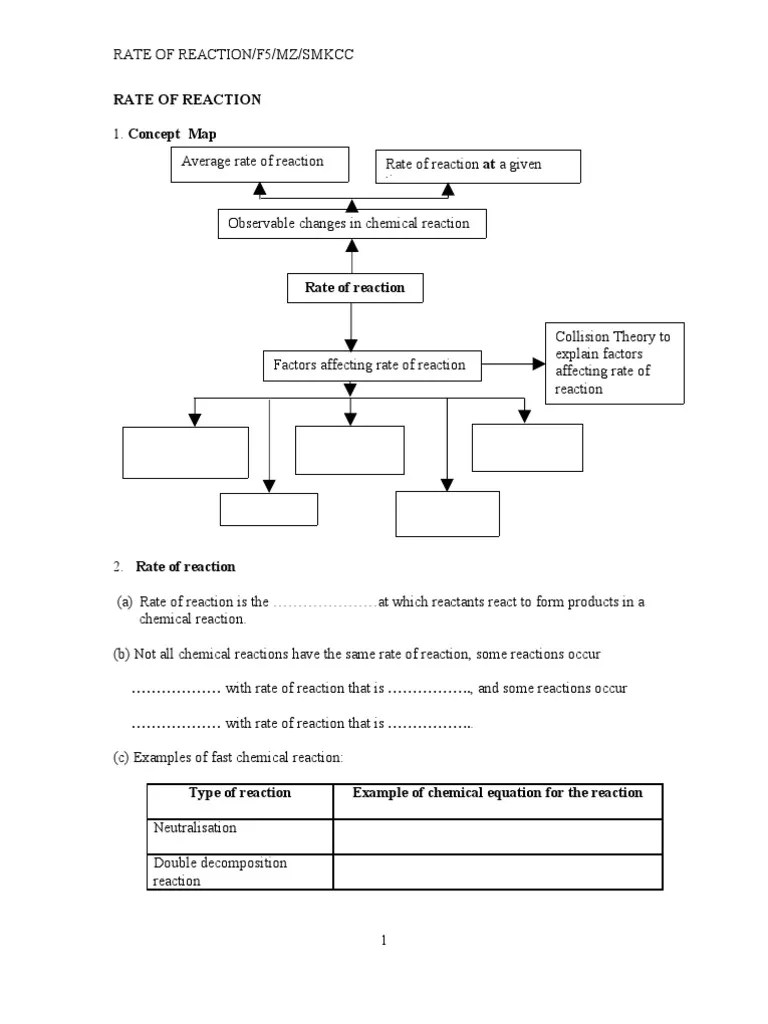Collision Theory Worksheet Answer Key
Collision Theory Worksheet Answer Key - There are more frequent collisions because the particles are moving faster. This comprehensive guide will break down the key concepts, address your specific questions, and provide you with a clear path to mastering this important aspect of chemistry. For a chemical reaction to occur, the reacting particles must collide with enough energy. 2) a reaction does not always occur when two reactant particles collide. Follow the instructions to go through the simulation. Tions of substances to change. 3) what are 4 things that will alter the rate of a chemical reaction?
They must collide with the right orientation and with sufficient energy. The rate of reaction will depend upon the frequency of the collisions, the appropriate orientation of the collisions and the number of collisions in which the reactant particles possess at least the minimum activation energy. What is meant by collision theory? In terms of collisions, why does an increase in concentration lead to an increase in the rate of the reaction?
3) a rule of thumb used by organic chemists is. How fast or slow the chemical reaction occurs. Collision theory worksheet 1) explain collision theory. Explain in terms of collision theory why increasing the temperature increases the rate of a reaction? Collision theory is a way to explain why different reactions occur at different rates. 2) describe how the activation energy of a reaction affects the overall rate of the chemical reaction.
Unlocking the Mysteries of Collision Theory The Ultimate Answer Key
worksheet. Collision Theory Worksheet. Grass Fedjp Worksheet Study Site
(2 marks) there is a greater fraction of collisions with sufficient energy. Nces produced by the reaction. Tions of substances to change. The collision theory gizmo™ allows you to experiment with several factors that affect the rate at which reactants are transformed into products in a chemical reaction. Look at the key at the bottom of the simulation pbelow, draw ( ) the two.
Increasing the frequency of collisions and effectiveness of collisions can increase reaction rate. Sl & hl answers to collision theory questions 1. 2) a reaction does not always occur when two reactant particles collide. (2 marks) there is a greater fraction of collisions with sufficient energy.
Increasing The Frequency Of Collisions And Effectiveness Of Collisions Can Increase Reaction Rate.
They must collide with the right orientation and with sufficient energy. Independent practice answers 1.what is collision theory? Tions of substances to change. This worksheet (and complete, full solution answer key) is designed for senior chemistry students provides a comprehensive review of collision theory.
It States That For A Reaction To Occur, Particles Need To Collide With Enough Energy And Hit With The Correct Orientation.
Explain how a catalyst will speed up a chemical reaction. The collision theory gizmo allows you to. Higher temperature results in an increase in reaction rate. Collision theory is a way to explain why different reactions occur at different rates.
3) A Rule Of Thumb Used By Organic Chemists Is.
Explain, using collision theory, what happens to the rate of the reaction as the reaction proceeds to completion. Explain in terms of collision theory why increasing the temperature increases the rate of a reaction? Thus the rate will be high. In terms of collisions, why does an increase in concentration lead to an increase in the rate of the reaction?
The Minimum Energy That Particles Need To Collide With In Order To.
Before particles can react they must collide with each other. Collision theory states that chemical reactions occur when reactant particles collide with sufficient energy and in the correct orientation to overcome the bonds holding the reactant particles together. Reactants are substances that enter into a reaction, and products are subst. The collision theory gizmo™ allows you to experiment with several factors that affect the rate at which reactants are transformed into products in a chemical reaction.
Thus the rate will be high. 2) describe how the activation energy of a reaction affects the overall rate of the chemical reaction. The rate of reaction will depend upon the frequency of the collisions, the appropriate orientation of the collisions and the number of collisions in which the reactant particles possess at least the minimum activation energy. Collision theory states that for a reaction to occur, particles must collide with sufficient energy and correct orientation. Collision theory, while fundamental to understanding chemical reactions, can be challenging to comprehend.






